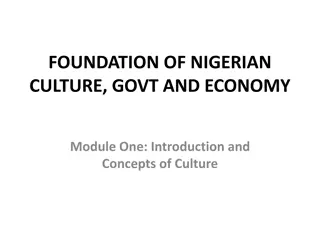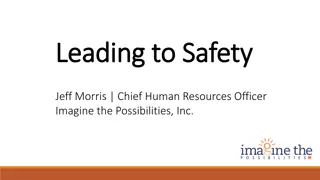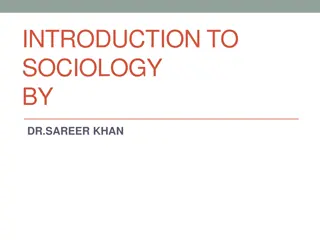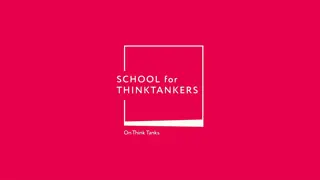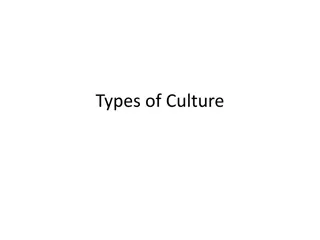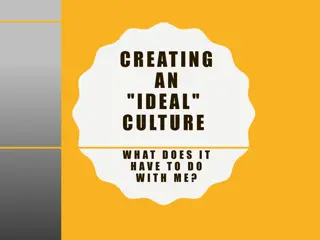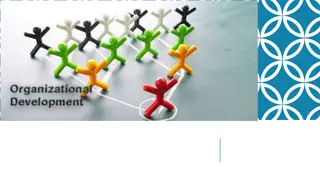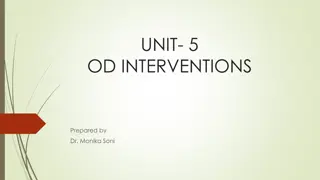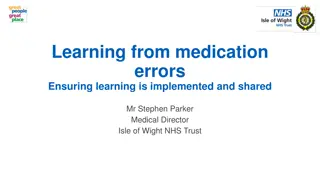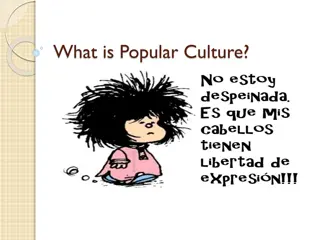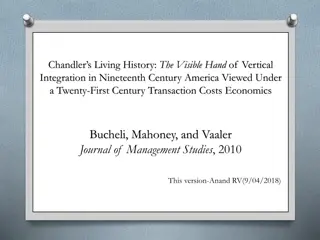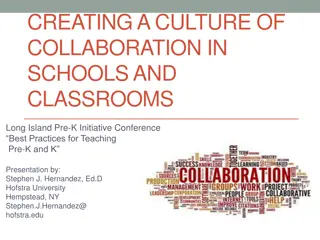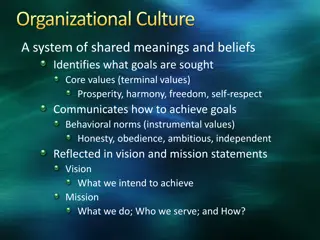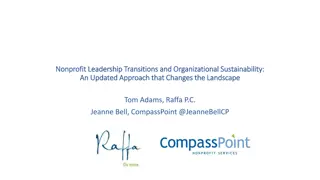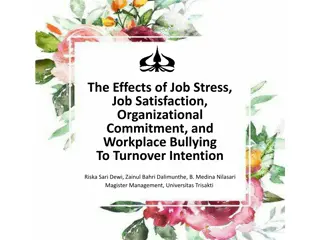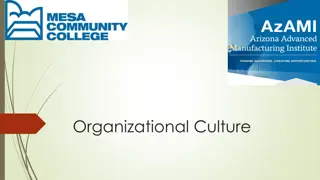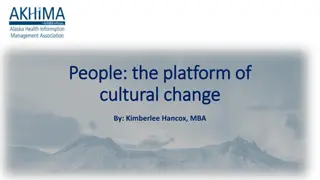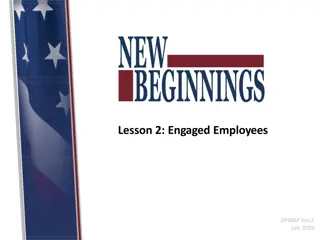Insights into Organizational Culture and Effective Work Practices
Explore the key aspects of organizational culture, the evolution of the social contract in the workplace, characteristics of organizations, indicators of organizational culture, and more. Learn how organizational culture influences behavior, values, and norms within a workplace setting, impacting performance and employee satisfaction.
Download Presentation

Please find below an Image/Link to download the presentation.
The content on the website is provided AS IS for your information and personal use only. It may not be sold, licensed, or shared on other websites without obtaining consent from the author. Download presentation by click this link. If you encounter any issues during the download, it is possible that the publisher has removed the file from their server.
E N D
Presentation Transcript
Organizational Culture & Effective Work
Presentation Overview Changed social contract Characteristics of organizations Organizational culture Kinds of organizations Past and present organizational structures Leadership in organization development Career and workforce development CIP Perspective
Changed Social Contract Old social contract Loyalty = economic security New social contract Based on opportunities for training & development Loyalty more to the profession
Changed Social Contract Job security vs. employability security what s the difference? Focus on developing skills and competencies that are valued in the marketplace
Characteristics of Organizations Drucker s view: special purpose institutions they concentrate on one task clear, focused mission
Characteristics of Organizations Organizations select members Employees are both independent & interdependent within this social system Organizations are always managed Must be able to function in rapidly changing conditions
Organizational Culture Defined 1) Members have shared experiences in solving problems 2) Shared world view among group members 3) Learned product of group experience over time 4) May include subcultures within departments or teams
Indicators of Organizational Culture Indicator Observable behaviors What are some What are some examples of examples of these in these in organizations organizations you re you re familiar with? familiar with? Regular behavior Dress, office interactions Norms Work effort, work taken home Dominant values Importance of family Philosophy Views of employees Rules Time management, office relationships Feeling or climate Physical layout, level of trust among workers
Increasing Diversity in Organizations More older workers More immigrants and diverse ethnic racial groups More people with disabilities More women
Organizational Problems Related to Culture Can you think of Can you think of some examples some examples from your work from your work experience? experience? New technologies Intergroup conflicts Communication breakdowns Training problems
Kinds of Organizations 1) Profit-Making What type of What type of organization do organization do you see yourself you see yourself working in? working in? Why? Why? 2) Nonprofit 3) Entrepreneurial Nonprofits 4) Governmental 5) Quasi-Governmental 6) Associations
Past & Present Organizational Structures Triangle shape replace by new diamond-shaped workplace 5-10% Top 5-10% = executives & managers Bottom 15-40% = contract & temporary workers Middle 50-80% - lead teams, supervise co-workers 50-80% Core Workers 50-80%
Past & Present Organizational Structures Changing structure of work organizations Characteristics of these new organizational structures Communities of practice Emphasis on interconnections, teamwork, fewer boxes What Holland types are likely to be valued in these new types of organizations?
Leadership in Organizational Development Organizational founders as first source of culture Schein describes organizational leadership as culture management Newer organizations use of work teams, task forces to provide leadership
Career & Workforce Development Workforce planning What the organization does to ensure proper growth What strategies What strategies can you use to can you use to effectively effectively manage your manage your career once on career once on the job? the job? Career management What individuals do to ensure their interests, values, skills, and goals are met in the organization
CIP Perspective Self-Knowledge Changing nature of organizations employees need to assess their skills, interests, and values how do these match with the environment? Reality of less job security Qualities and skills valued by organizations How do How do these these relate to relate to Holland s Holland s RIASEC RIASEC types? types?
CIP Perspective Option-Knowledge PCT must consider organizational culture in addition to occupational knowledge Need for workers who can function effectively in diverse organizations RIASEC types can describe organizational culture and how it might fit with a person s interest How might How might your RIASEC your RIASEC code inform code inform the type of the type of organization organization you want to you want to work in? work in?
CIP Perspective Decision Making (CASVE Cycle) Pay attention to feelings/instincts during interviews Carefully observe organizational culture in members behavior Career decision making may be influenced by match between the individual and the organization
CIP Perspective Executive Processing Changing notion of career due to new social contract Importance of personal development & strategic career vision Having an entrepreneurial mindset Need for new career metacognitions: awareness of skills and value you bring as an employee
Summary Organizations as the context for one s career New social contract: focus on employability security Importance of understanding organizational culture Need to incorporate changing organizational cultures and structures into your PCT and career decision making



